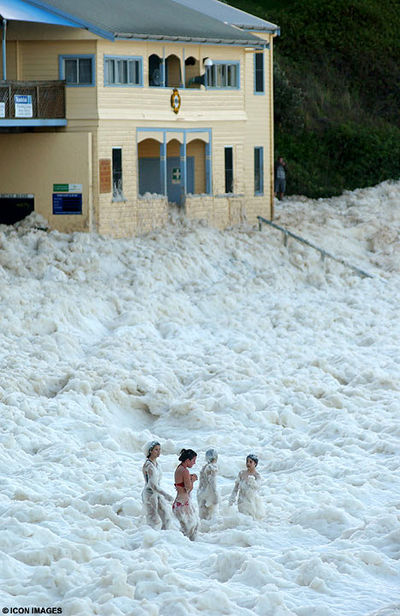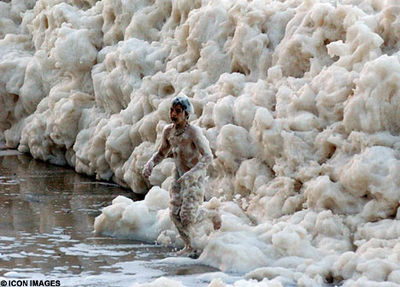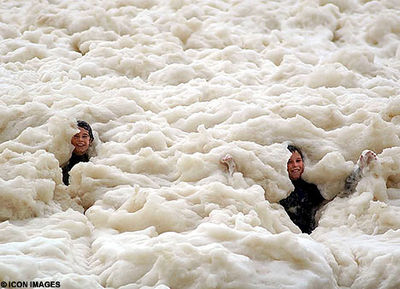Foam beach, Sydney
The following pictures were taken in 2007 on the coast at Yamba in New South Wales, Australia. The Daily Mail in the UK published the images and the the following extract is taken from their article: Capuccino Coast: The day the Pacific was whipped up into an ocean of froth.
It stretched for 30 miles out into the Pacific in a phenomenon not seen at the beach for more than three decades. Scientists explain that the foam is created by impurities in the ocean, such as salts, chemicals, dead plants, decomposed fish and excretions from seaweed. All are churned up together by powerful currents which cause the water to form bubbles. These bubbles stick to each other as they are carried below the surface by the current towards the shore. As a wave starts to form on the surface, the motion of the water causes the bubbles to swirl upwards and, massed together, they become foam. The foam "surfs" towards shore until the wave "crashes", tossing the foam into the air.
The foam was so thick it came all the way up to the surf club "It's the same effect you get when you whip up a milk shake in a blender," explains a marine expert. "The more powerful the swirl, the more foam you create on the surface and the lighter it becomes." In this case, storms off the New South Wales Coast and further north off Queensland had created a huge disturbance in the ocean, hitting a stretch of water where there was a particularly high amount of the substances which form into bubbles.[1]
The foam is actually due to the colony-forming unicellular alga Phaeocystis. Unlike the colonies, the individual cells are not visible to the naked eye. The individual cells in the colonies of Phaeocystis are embedded in a kind of gelatinous layer. The colonies use this slime layer to temporarily store organic material formed by photosynthesis during the day. This provides the cells with energy at night, allowing them to grow both night and day. The slimy layer also protects the algae from eating. It is believed that Phaeocystus bloom is stimulated by eutrophication, the enrichment of the sea with nutrients such as nitrate and phosphate[2]. See also Marine Plankton.


